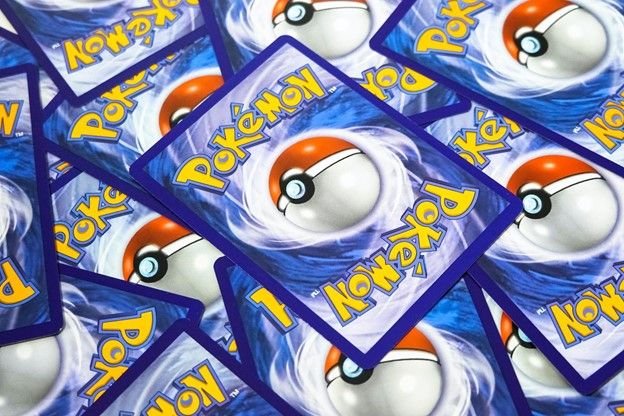Pokémon Card Rarity: How to Spot the Rarest Cards in 2022

Rarity’s what makes collecting Pokémon cards fun; if each card was just as common as the next, there’d be no challenge, no thrill of the hunt to keep you searching for the latest perfect addition to your collection.
Beyond the intrinsic thrill of finding a card that’s been on your list for ages, Pokémon card rarity also plays a massive part in how valuable each card is — and with the explosive growth of the Pokémon card market in recent years, every collector should take some time to better understand how it works.
As more people eye their old Pokémon collections in search of sales or trades, a few key concepts and tools will help you find out just how rare the cards in yours may be. First things first, let’s define what we actually mean when we talk about Pokémon card rarity.
Subscribe to get our best content in your inbox
By clicking “Submit” you agree to Dibbs
Privacy Policy and
consent to Dibbs using your contact data for newsletter purposes.

What does Pokémon card rarity mean?
The official way to judge Pokémon card rarity is through the rarity designations printed on each card. On North American Pokémon cards, these are placed in the lower right corner of each card and take the form of a rarity symbol and a set number.
A circle on the lower right corner means it’s a Common card, a diamond means it’s an Uncommon card, a star means it’s a rare card, and a star with the word “Promo” on top means it’s a special promotional card. Promo cards are typically given away for special occasions, rather than being sold. Japanese Pokémon cards use a letter-based rarity scale instead, with C for Common, U for Uncommon, and R for Rare.
So there’s one answer to the question of “how do you know if you have a rare Pokémon card?” If it has a star or an R in the lower right corner, it’s “rare,” officially speaking. Some cards have a holographic foil finish to either their card art or to the background design elements, making them Rare Holo and Reverse Holo, respectively. Ultra Rare cards are designated both by their foil appearance and an additional decorative designator after the standard card name, such as “ex” or “Prime.”
Finally, Secret Rare cards are identified by having a card number higher than their total set number. For instance, the Dark Raichu from the Pokémon Trading Card Game’s early Team Rocket expansion was numbered 83 out of 82 for the set.
Each of those official designators reflects how many of the cards were printed and included in retail card packs (or not included, in the case of promo cards). Still, these designators don’t tell the full story in terms of determining a card’s practical rarity and associated value.
How do you know if you have a rare Pokémon card?
The info in the corner of the card can only tell you what the creators of the game knew when they put the card to print, but the hobby of collecting gives objects lives and stories far beyond anything their creators may have intended. Just like with finding the value of baseball cards, age is one of the most significant factors in determining Pokémon card rarity: simply by the nature of cards deteriorating or being lost over time, older cards tend to be rarer.
While people of all ages collect Pokémon cards now, most of the oldest cards were once owned by young kids who didn’t put much thought into keeping them in pristine physical condition. Bent corners, scuff marks, and other signs of wear are very common; old cards that are still in great physical condition are much rarer than their worn-and-torn counterparts. Check out our guide to finding out how much Pokémon cards are worth for more in-depth info on Pokémon card condition grading.
The age of a card, a casual assessment of its condition, and the aforementioned official rarity designations will give you a general idea of how rare a particular card may be. From there, you can punch its name into the PSA Price Guide, find its entry, then click over to the Population tab to find out how many officially graded copies of that card are in circulation. Looking for eBay listings will give you a look at the broader market since you can’t count on every last card being formally graded.
Where to find a rare Pokémon cards list
One more helpful tool to consult before you start digging for gold in your old collection is a rare Pokémon cards list. There’s no one place to go to find the official rarest card, but gaming enthusiast outlets such as Dicebreaker, The Gamer, and Dexerto have each taken a crack at laying out which Pokémon cards are the rarest of them all. Despite their variance in individual rankings, if you own any of the cards that appear on them, it’s time to start giving them the white glove treatment.
One common subject on all of these lists is Illustrator Pikachu, a promo card that was given to the winners of a 1998 Pokémon fan art competition in Japan. Only 39 of the cards are known to have been created, and a near-mint condition Illustrator Pikachu recently set the all-time high Pokemon card public sale price of $900,000 back in February.
Another high-profile example of a rare Pokémon card to recently hit the market was the 2003 Pokémon Skyridge #147 Charizard Holo PSA 10, which is available now for fractional ownership on Dibbs. Charizard cards have taken a special place in the hearts of many Pokémon collectors from childhood to today, and this was the final Charizard produced in the Pokémon Trading Card Game’s Wizards of the Coast era.

